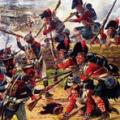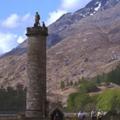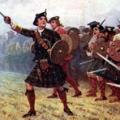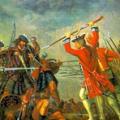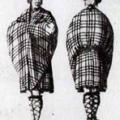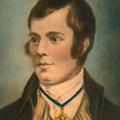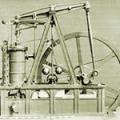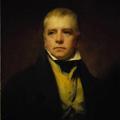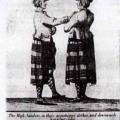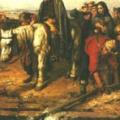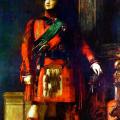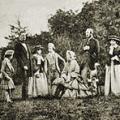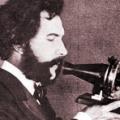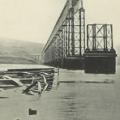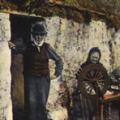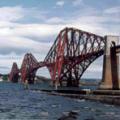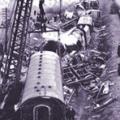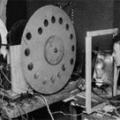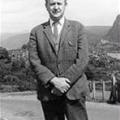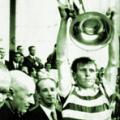Categories
Most Liked
Posted on July 17, 2013
by Amanda Moffet
by Amanda Moffet
Posted on May 12, 2013
by Chas Mac Donald
by Chas Mac Donald
Posted on August 29, 2013
by Amanda Moffet
by Amanda Moffet
Posted on February 6, 2013 by Donald | 2 views | comments
One of the world’s most famous militia was first raised in 1725 and became a Regiment under the Earl of Crawford as Colonel in 1739.
Known then as the 43rd then 42nd Royal Highland Regiment, its Gaelic motto translated into ‘The Black Watch of Battles, First to Come and Last to Go’.
The Black Wat...
Posted on February 6, 2013 by Donald | 1 views | comments
In 1745 news was received of a powerful new Jacobite force to arrive from the Continent, headed by the grandson of James VII, returning from exile in Italy.
At Loch nan Uamh in Arisaig, Prince Charles Edward Stewart came ashore with only seven supporters, known later as the Seven Men of Moidart. ...
Posted on February 6, 2013 by Donald | 0 views | comments
Bonnie Prince Charlie’s landing on Scottish soil ignited a firestorm of incredible stories and willing recruits so that the myths encouraged the masses, who encouraged the myths in a cycle. While the stories were drawing volunteers they were worrying the established powers. Sir John Cope, commandi...
Posted on February 6, 2013 by Donald | 0 views | comments
The Jacobites had fought all the way from the Highlands to Derby in England.
Outside of the Highlands it was becoming clear that Prince Charles and his claim was of no interest to Lowlanders or the Northern English, where very few supporters were coming forward. The Stewart intention of using suc...
Posted on February 6, 2013 by Donald | 8 views | comments
Culloden Moor, known then as Drummossie Muir, was the site of the last pitched battle on the British mainland on 16 April 1746.
The Jacobites were pulling back into the Highlands, ending their siege of Stirling as they headed for Inverness. Despite their victory at Falkirk, Jacobite morale was de...
Posted on February 6, 2013 by Donald | 3 views | comments
Following the Jacobite defeat at Culloden, the last pitched battle on British soil, Prince Charles fled to South Uist then eventually across to France.
His supporters who remained suffered terribly from ‘Butcher Cumberland’ and his medieval reprisals. To further punish Scotland, Parliament issued...
Posted on February 6, 2013 by Donald | 2 views | comments
Robert Burns was born in Alloway, Ayrshire on 25 January 1759.
His father was a gardener and tenant farmer, and the life he was brought up in made him acutely aware of society’s unfairness as he laboured hard yet lived in poverty.
In 1786 he published 612 copies of Poems, Chiefly in the Scottish...
Posted on February 6, 2013 by Donald | 3 views | comments
James Watt, the son of a merchant, was born on January 19, 1736, in Greenock. He worked as a mathematical-instrument maker as a teenager and soon became interested in steam engines, which were used at the time to pump water from mines. His interest really took off in 1763 when he was given a Newco...
Posted on February 6, 2013 by Donald | 2 views | comments
Novelist and poet Sir Walter Scott was born in 1771 in Edinburgh, one of six surviving infants from twelve.
At eighteen months he took ill with poliomyelitis but pulled through although with a lame right leg. He was well educated, studying at Edinburgh University. In 1792 he was admitted to the F...
Posted on February 6, 2013 by Donald | 6 views | comments
The Highland Dress Proscription Act of 1746, designed to punish the clans and destroy their identities and economic structures, was repealed in 1782 after thirty six years in law.
The Repeal went as follows:
"Listen Men. This is bringing before all the Sons of the Gael, the King and Parliament o...
Posted on February 6, 2013 by Donald | 2 views | comments
The clan system regarded the land as belonging to their community, worked areas being passed down through the family while additional lands could be rented. As the generations passed, the clan chiefs became more wealthy and detached from their kinsmen, regarding them as their effects rather than t...
Posted on February 6, 2013 by Donald | 0 views | comments
King George IV made a royal visit to Edinburgh in 1822.
It was the first time a monarch had come to Scotland since 1641 and his tour was stage-managed by Sir Walter Scott. Scott engineered an image of Scotland similar to the country in his romantic novels for the visit.
Highland Games were re-in...
Posted on February 6, 2013 by Donald | 0 views | comments
The second visit of a United Kingdom monarch to Scotland was in 1842 when Queen Victoria and Prince Albert disembarked at Leith.
Their exploration of Perthshire, walking, reading and deer-stalking, was so pleasurable that they returned annually. In 1852 they bought Balmoral and had the castle bui...
Posted on February 6, 2013 by Donald | 0 views | comments
Born on March 3, 1847 in Edinburgh, Bell is best known for his invention of the telephone however he was a remarkable character and brilliant inventor who came up with many inventions such as an air-cooling system, a way of desalinating sea-water and a sorting machine for punch-coded census cards....
Posted on February 6, 2013 by Donald | 3 views | comments
Designed by Sir Thomas Bouch, the Tay Railway Bridge was opened in 1878.
The single-track bridge was a box construction with numerous box-section legs, up to 230ft apart, supporting the steam trains up to 88ft in the air as they snaked for almost two miles over the Tay and Perth-bound shipping. B...
Posted on February 6, 2013 by Donald | 1 views | comments
After a century of being treated worse than the cattle they lost their lands to, the government finally acknowledged that the victims of the Clearances were still being victimised and needed protective legislation.
The Napier Commission studied the situation and put forward recommendations.
Ignor...
Posted on February 6, 2013 by Donald | 0 views | comments
Descibed as Scotland’s Eiffel Tower, the breathtaking Forth Railway Bridge stands at Queensferry Narrows, nine miles west of Edinburgh, where it carries trains for a mile and a half over the Firth of Forth.
The cantilever structure, with three 340ft high towers, holding the double railway 150ft a...
Posted on February 6, 2013 by Donald | 0 views | comments
On the 22nd May 1915 Three trains; a special troop train, a local train and the night express coming north from Euston Station, London crashed at Quintinshill Junction near Gretna on the Scottish border causing one of Britain's worst rail disasters.
The troop train was one of two carrying the Lei...
Posted on February 6, 2013 by Donald | 0 views | comments
It is regarded by some as Man’s greatest invention, possibly more life-sustaining than fire and certainly more entertaining than the wheel; it is regarded by others as the Anti-Christ; and it began with Helensburgh-born John Logie Baird.
The very first television picture was transmitted by him in...
Posted on February 6, 2013 by Donald | 2 views | comments
Sorley MacLean (Scottish Gaelic: Somhairle MacGill-Eain, sometimes "MacGilleathain" in earlier publications) was born at Osgaig on the island of Raasay on 26 October 1911. At that time on Raasay, which lies between the Isle of Skye and the Scottsih Mainland, Gaelic was the first language.
His gra...
Posted on February 6, 2013 by Donald | 1 views | comments
On Thursday 25 May 1967 Celtic Football Club became the first ever british side to lift the coveted European Cup after beating Internacionale of Milan 2-1 at the Estadio Nacionale in Lisbon. The feat itself was great but made even more incredible by the fact that this side was made up, not from in...
Featured Articles
Most Discussed
Posted on July 16, 2013
by Amanda Moffet
by Amanda Moffet
Posted on February 6, 2013
by Donald
by Donald
Posted on July 17, 2013
by Amanda Moffet
by Amanda Moffet


 View More
View More View Less
View Less